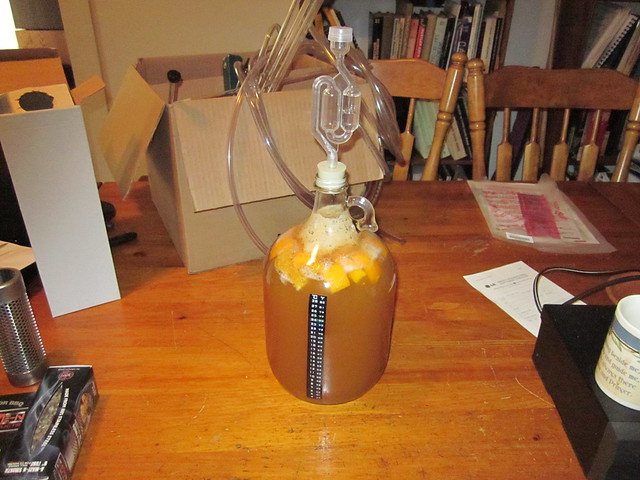Hi folks - noob here, looking for a bit of guidance.
I'm an experienced cider maker and am looking to make my first mead. I'll be using the JAOM recipe and I have a couple of questions.
Fair enough, it's a reasonable one to start with........
Bread yeast? Is that because it's easily available, or does it contribute to the end product somehow? I have a variety of ale and wine yeasts to choose from, including 71B and EC1118 - are they a better choice?
The whole recipe seems set up/worked out to make starting easy i.e. all the ingredients are easily obtained from a grocery type place. The bread yeast is for ease as well, but has a hidden benefit. One thing people find, is that it doesn't flocculate very well, so once it's done, you need to be careful.
The best reason for sticking to it, is because it poops out earlier leaving residual sugars. If you replace it with a wine yeast, it will often ferment dry - which shifts the focus of the final taste, from sweet to bitter as hell. This is because the residual sweetness balances the bitterness that comes from using the whole orange including the pith which is where the bitterness comes from. You can change it if you wanted but you'd find it'd need back sweetening. If you did take a reading, you'd find the start gravity is about the 1.130 sort of area, finished it ends up at about the 1.030 sort of area.
No nutrients? I always add yeast nutrient to my ciders when I pitch the yeast. I see threads here suggesting a staggered regimen of nutrient and DAP - I have those compounds available - should I use them?
No, as Joes says in the original recipe, just follow it exactly for the predictable, repeatable results. The nutrients come from the orange and raisins (and from the dead yeast). Many recipes will use both, because they have less nutrition in them in the first place (honey is famously low in nutrients). For a good read up about mead and nutrients a good link can be found here
https://www.homebrewersassociation.org/attachments/0000/1256/NDzym05_MasterMead.pdf
My plan would be for a sweet still mead, no carbonation. Probably rack to secondary in a couple months and age until Thanksgiving. Does mead finish sweet, or will it go dry to 1.000 like cider? I'd rather not stabilize with chemicals and backsweeten, but I will if that's the best path to where I want to go.
TIA
Meads can finish both sweet and dry. I'm one of those who doesn't pile all the fermentables in up front i.e. I'll start my batches in the 1.100 to 1.110 sort of area (rarely going above 1.120 to initially). This is mostly because I want to make the most of my yeasts ability and not stress it in any way from the get go. I like to use Lalvin yeasts because they publish more data about them than any other maker. If I want to make a rocket fuel batch, I follow the step feeding protocol but I use nutrition for the maximum expected % ABV - I also make it 2 parts fermaid (energiser) to 1 part DAP (nutrient). This is because as you'll notice from the above link that it seems more likely that H2S production can come from low micro-nutrients like the B vitamins than from low nitrogen. In any case, the fermaid range have DAP already in them so you're just increasing the nitrogen with more.
I routinely ferment my batches dry, rack off the gross lees, then stabilise, then before finishing the clearing process sweeten to my preferred level (about the 1.010 to 1.015 sort of level) - I sweeten at this stage because sweetening with honey can cause a haze (protein I believe it is) and that if I sweeten before clearing, I find that any haze produced by the sweetening honey will drop out with the rest of the lees.
It is fair to point out that you will read of many hereabouts who like to start their meads very high, in the hope that the yeast will die off at a specified level. I find that this method makes for problems as the yeast can sometimes take some effort to get the ferment underway (osmotic shock caused by high levels of fermentable sugars), and/or that stressing the yeast early on can make for difficult ferment conditions that can stick, stall or just slow the process.
Don't be put off by the suggested early stage aeration methods. This is done to help with yeast colony development (I routinely aerate from the start gravity until it hits the 1/3rd sugar break).
p.s. as for the wine yeasts you allude to, I like 71B for fruit batches, but only use EC-1118 for restarts (I find it seems to blow too many of the VOC's straight out the air lock for my liking). If I want a higher % ABV, I prefer K1-V1116 or D21.......







